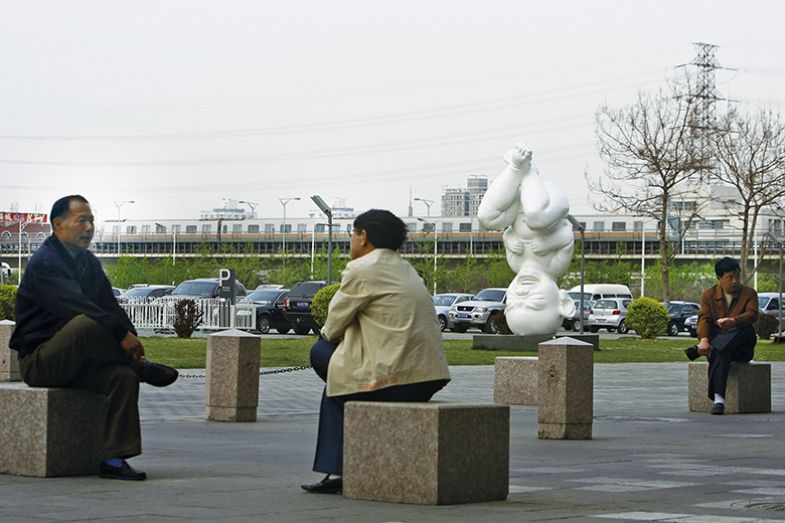Browse the THE Asia University Rankings 2019 results
While China’s higher education strategy is often characterised by its focus on competition, with a range of excellence initiatives pouring additional funding into a select number of institutions over the past two decades, one of the most interesting recent developments in the nation is an initiative that is ostensibly primarily about collaboration.
The Belt and Road Initiative (BRI), announced in 2013, is a £750 billion scheme to extend Chinese influence across Asia, Africa and Europe through overland and maritime trade routes, infrastructure development and Chinese investment. The Chinese government calls the initiative “a bid to enhance regional connectivity and embrace a brighter future”.
The BRI route takes in about 70 countries, which account for half the world’s population and a quarter of global gross domestic product. More than a quarter of these nations feature in the Times Higher Education Asia University Rankings 2019.
China leads this ranking for the first time this year, with Tsinghua University supplanting the National University of Singapore in first place. While its Beijing neighbour Peking University drops two places to fifth, a consequence of declines in its research income and industry income, 16 of the 26 Chinese institutions in the top 100 have held steady, risen or entered the list for the first time.
But to what extent will the country’s higher education success, coupled with the BRI, drive education forward across the whole of Asia?
Gerry Postiglione, professor in the Faculty of Education at the University of Hong Kong and an expert in the comparative sociology of Asian higher education, says that China’s rising number of “World Class Universities” represents “a potential long-term asset for engaging with the significant diversity of other leading research universities located in countries encompassed by the BRI”.
The Chinese government is supporting 42 universities to achieve “world-class” status, while 64 universities across the BRI route benefit from being included in their own countries’ excellence initiative, Postiglione notes.
“To position itself as a global economic hub by mid-century, the Asian region will need to cement its reputation for excellence,” he says.
“For Asia to constitute more than half of global GDP by 2050 [it accounted for 41 per cent of global GDP in 2016], it must raise the quality, diversity, cost recovery and governance autonomy of its institutions of higher education, especially its universities. China has a role here because its investment – as a developing country – in creating world-class universities has paid off in spades.”
Most Asian countries are approaching middle-income status, and building high-quality research universities will be crucial if they are to avoid the “middle-income trap” – a situation in which a country rises to a certain level of income and development but then stagnates, Postiglione says.
“This requires resources and experience, both of which China has and wants to offer as part of its BRI.”
Another collaborative initiative in the region is the Greater Bay Area – a development strategy encompassing Guangzhou, Shenzhen and seven other Chinese cities clustered around the Pearl River Delta, as well as the special administrative regions (SAR) of Hong Kong and Macao. It aims to deepen cooperation between the cities in a bid to become the world’s largest driver of technological innovation.
“Compared with the GBA, the BRI is a side dish for Hong Kong’s universities,” says Postiglione.
The Hong Kong University of Science and Technology now tops the SAR’s representatives in the Asia rankings, having leapfrogged the University of Hong Kong and climbed two places to third thanks to a boost in its industry income and international outlook scores.
At the other end of the Hong Kong table, Hong Kong Baptist University has dropped 15 places to joint 70th even though it improved its overall score compared with last year, reflecting the increased competition. The region’s four other featured institutions stay relatively stable.
William Kirby, T. M. Chang professor of China studies at Harvard University, says that he is “not surprised at the rise of Chinese universities in global rankings”, noting that “today, no country puts more resources into higher education than China, which is home to the fastest growing system of higher education in the world – in quality as well as quantity”.
“It is also not surprising that Tsinghua is doing particularly well,” he adds, given its strengths in engineering and applied sciences and its development of programmes in the humanities and social sciences.
“Beyond that, Tsinghua, with the founding of Schwarzman College [a new residential college that will host the recipients of a global scholarship programme], for example, has become also a pioneer in international postgraduate education.”
Despite Peking’s decline this year, Kirby predicts that the two Beijing frontrunners will “continue to vie for the top position among Chinese universities”. However, he warns, there may be a slowing of the pace at which the country’s universities advance. “They will continue to need to attract and retain scholars at the highest global standard,” he says. “In a world of competition, this will get tougher in time. It will get tougher still if the political controls on Chinese universities continue to tighten.”

Elsewhere, in Indonesia, the recent implementation of a 2012 law allowing the establishment of international branch campuses could see the country establish closer ties with neighbouring Asian countries as well as with Western nations.
The law allows overseas universities to operate in special economic zones and requires them to partner with Indonesian institutions. They also must be ranked among the world’s top 200 in university or subject league tables.
The move could help to boost the performance of the country’s domestic institutions. Indonesia’s best performer, the University of Indonesia, only makes the 601-800 band in the THE World University Rankings, but it is ranked 133rd in the Asia table. It was ranked 201-250 in the continent last year and has improved thanks to a boost in its teaching, research and industry income scores.
Last month, Australia’s Monash University, ranked joint 84th in the THE global table, confirmed that it was considering an Indonesian outpost as a “next step” in its dealings with the archipelago, following the 4 March signing of a free trade agreement between the two countries.
Andrew Rosser, professor of South-east Asian studies at the University of Melbourne, says that Australia’s RMIT University is another institution that is “often touted as being most likely to take the plunge” of establishing an Indonesian outpost, while within Asia, Malaysian public universities “look like the strongest contenders at present”. In January, local media outlets reported that the Malaysian Education Ministry was “exploring opportunities” for its public universities to set up branch campuses in the country.
“I wouldn’t be surprised if some Chinese universities are also eyeing the possibility of a branch campus in Indonesia,” he adds, given that “some are becoming increasingly global in their operations”.
Tsinghua recently established a research centre in the country in Bali, while Xiamen University has a branch campus in Malaysia.
However, Rosser says that there are reasons for foreign universities to exercise caution, not least because the regulation could be subject to a legal challenge or revoked by a future government, particularly given that there are parliamentary and presidential elections in the country later this year. There are also still question marks around the approved locations for the campuses.
In 2010, India approved a bill that provided a framework allowing overseas universities to establish branch campuses in the country. In 2017, however, the idea was shelved, with the government claiming that it would instead focus on creating top domestic universities through its “Institutes of Eminence” scheme, which is initially set to provide additional funding to six universities .
A separate internationalisation drive aims to increase the number of overseas students in the country from just 47,000 to 200,000 in the next five years, by targeting 30 countries across South Asia, Africa, the Middle East and the former Soviet Republics.
Suresh Bhojraj, vice-chancellor of JSS Academy of Higher Education and Research, which was founded in 2008 and joins the THE Asia University Rankings for the first time this year in joint 62nd place, says the two new initiatives will “definitely bring a competitive spirit” to institutions in the country.
However, he adds that the Indian higher education system is “more tailored to meet the national expectations and, perhaps, meet the international expectations of young Indians rather than being an avenue for international students to pursue their educational needs in India”.
The country generally has a mixed performance in the Asia table, with significant rises and falls for individual institutions. However, its flagship, the Indian Institute of Science, remains in 29th place, while the Indian Institute of Technology Indore joins the list at joint 50th.
Another country that has attempted to boost its international outlook is Japan. Internationalisation, often cited as a weakness of the country’s higher education system, has become an urgent priority in a nation with a declining youth population and large debt.
But Brad Glosserman, deputy director of and visiting professor at the Tama University Center for Rule-making Strategies and author of the 2019 book Peak Japan: The End of Grand Ambitions, says that Japanese society still does not value internationalisation as highly as many other nations and is “less inclined” than other countries to “adopt big changes when the system works fairly well”.
Foreigners, he says, are viewed “very instrumentally” in Japan, where they are often thought of as merely a resource that provides a necessary skill set.
“Japan is a country that is changing. It is just not changing at a sufficient rate to keep pace with the changes in the world around it,” he adds.
Japan was arguably the leading higher education player in the continent in the 1980s and 1990s, but its universities have declined in the rankings over the past decade as China, Hong Kong and South Korea have made rapid progress.
This year, all of Japan’s top five universities have either improved or held steady in the Asia ranking, but most of its lower-ranked institutions have declined.
Has higher education in the country reached its peak?
“Japanese universities were never that great,” Glosserman says. “They were never held up as a paradigm of higher learning. There was always a sense, in fact, that the Japanese educational system had an emphasis on memorisation and hierarchy and didn’t nurture the skill set that was so vital to a 21st-century economy.”
He adds that international students are not yet enrolling in universities in Japan or China to go to a “top-rate institution in the world on a given subject”, as they would with institutions such as Harvard or the London School of Economics and Political Science.
“You come to these schools because you want to study Japanese or a Japan-related subject,” he says.
Register to continue
Why register?
- Registration is free and only takes a moment
- Once registered, you can read 3 articles a month
- Sign up for our newsletter
Subscribe
Or subscribe for unlimited access to:
- Unlimited access to news, views, insights & reviews
- Digital editions
- Digital access to THE’s university and college rankings analysis
Already registered or a current subscriber? Login







